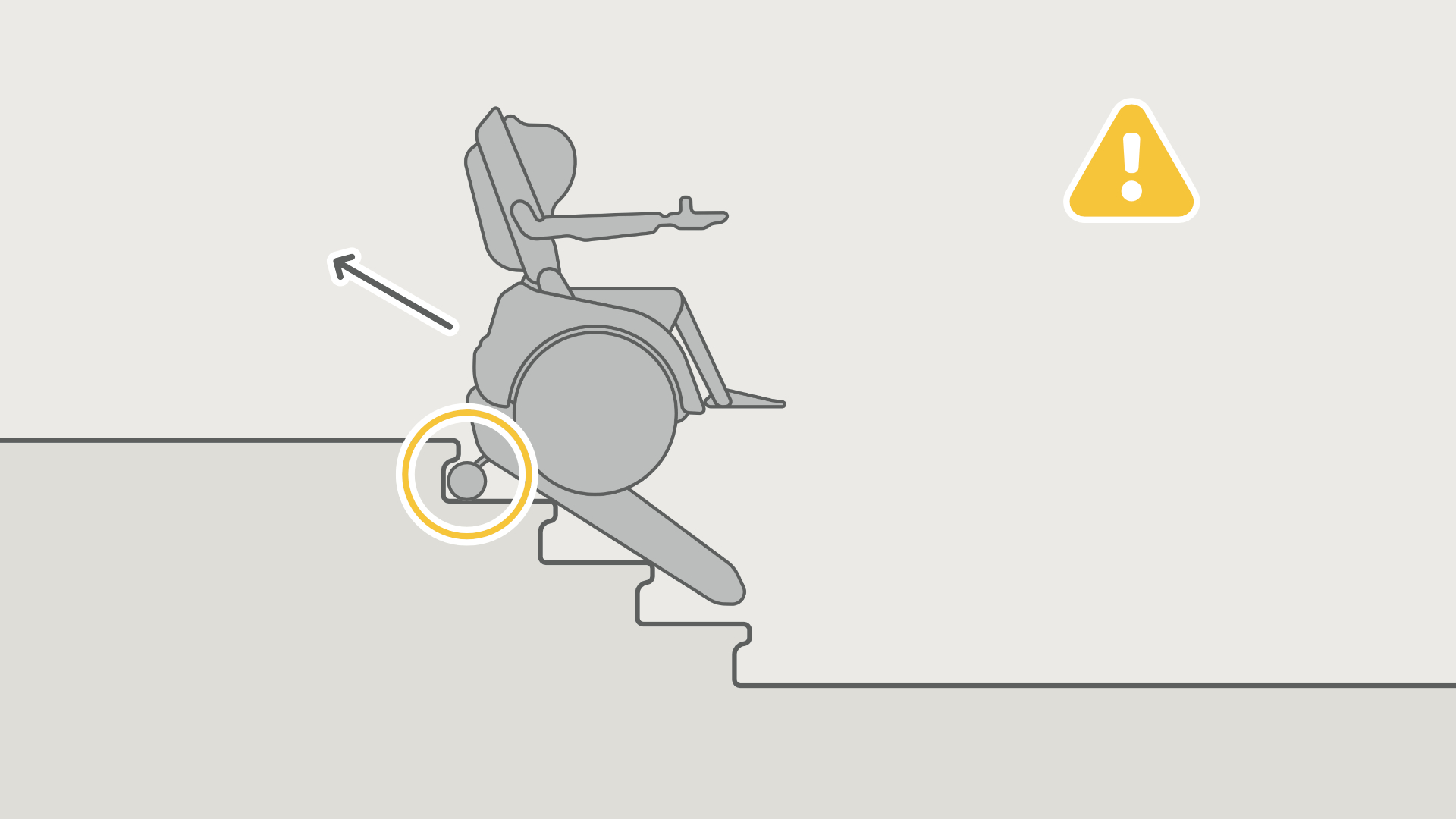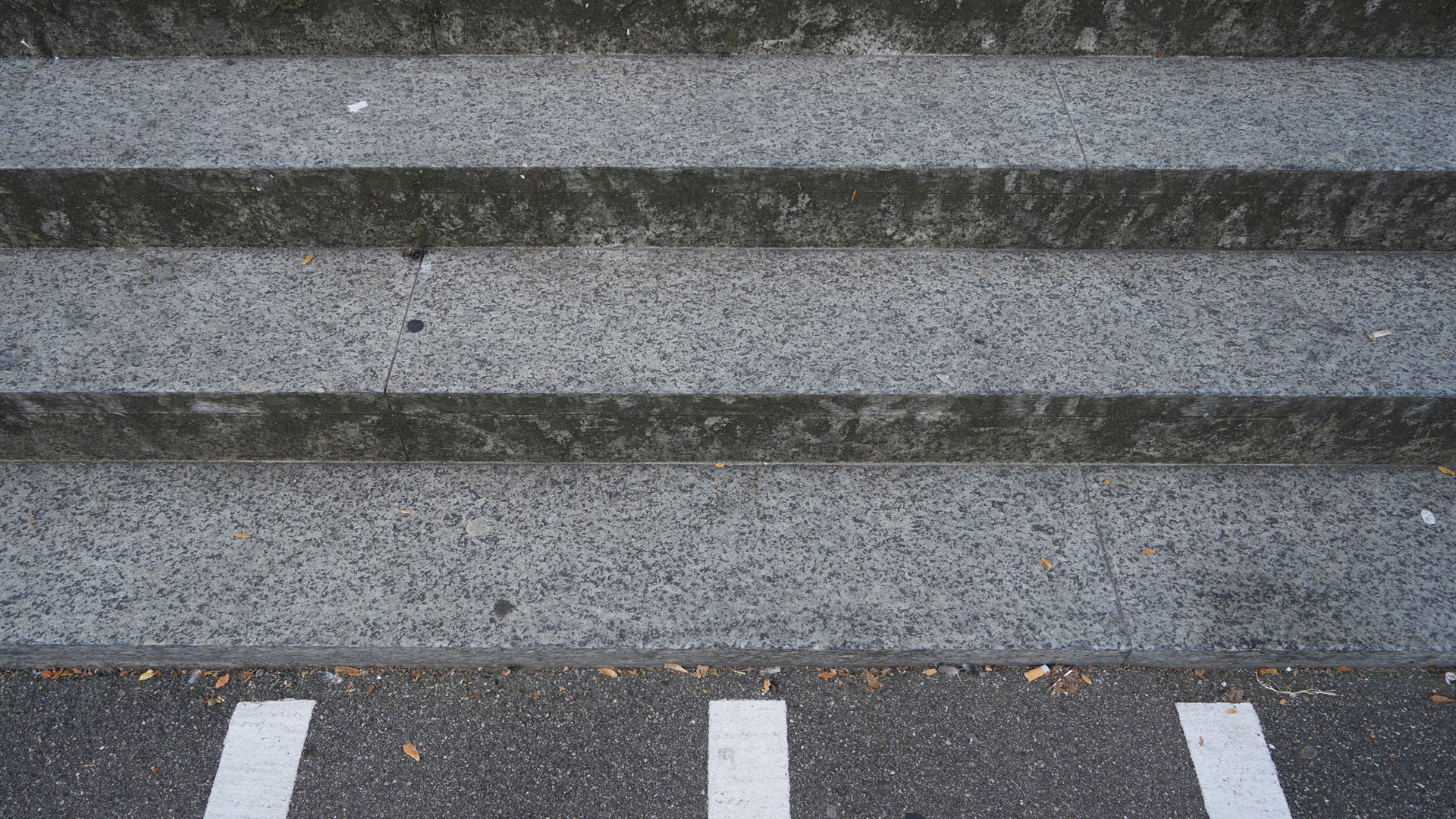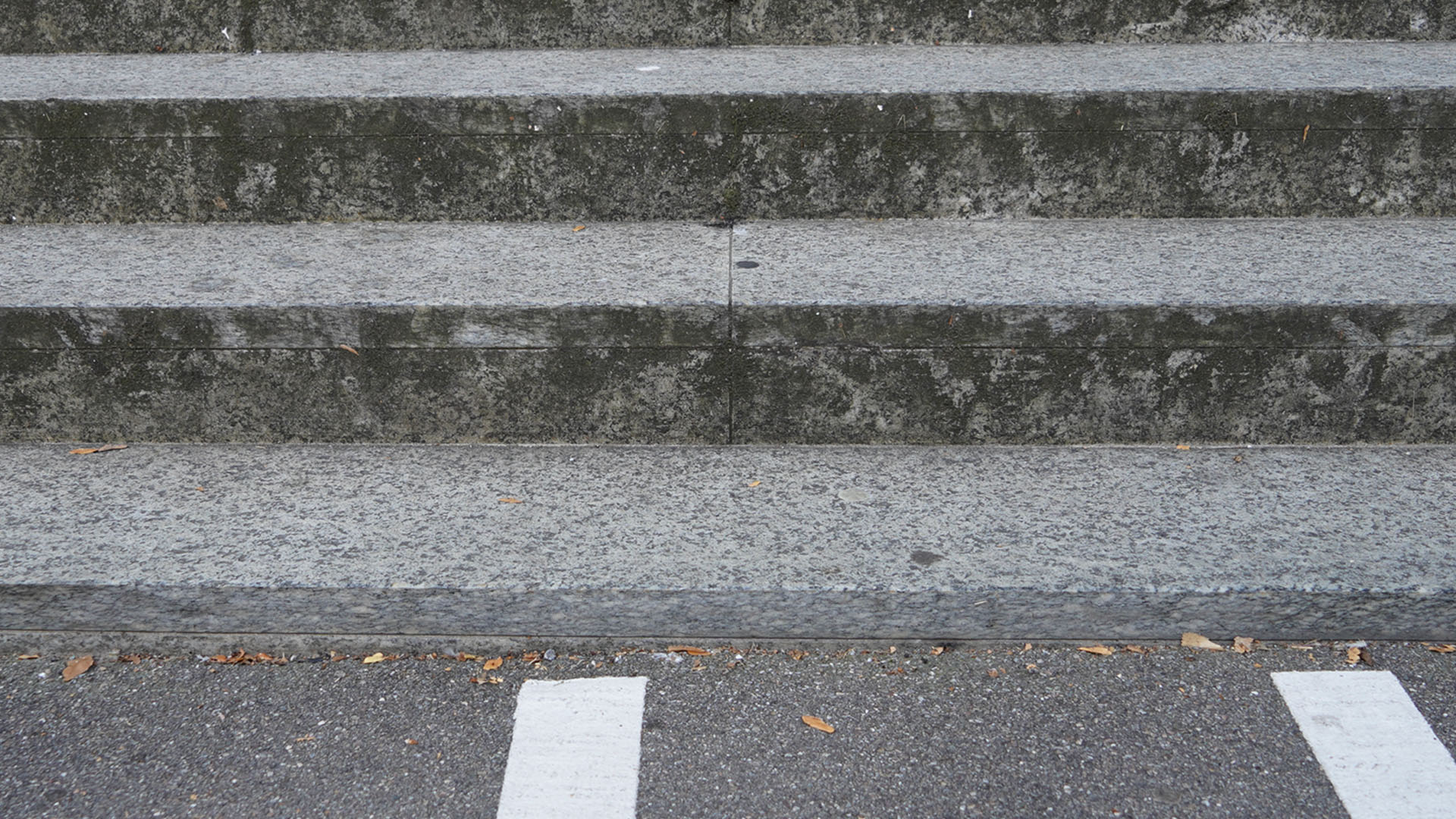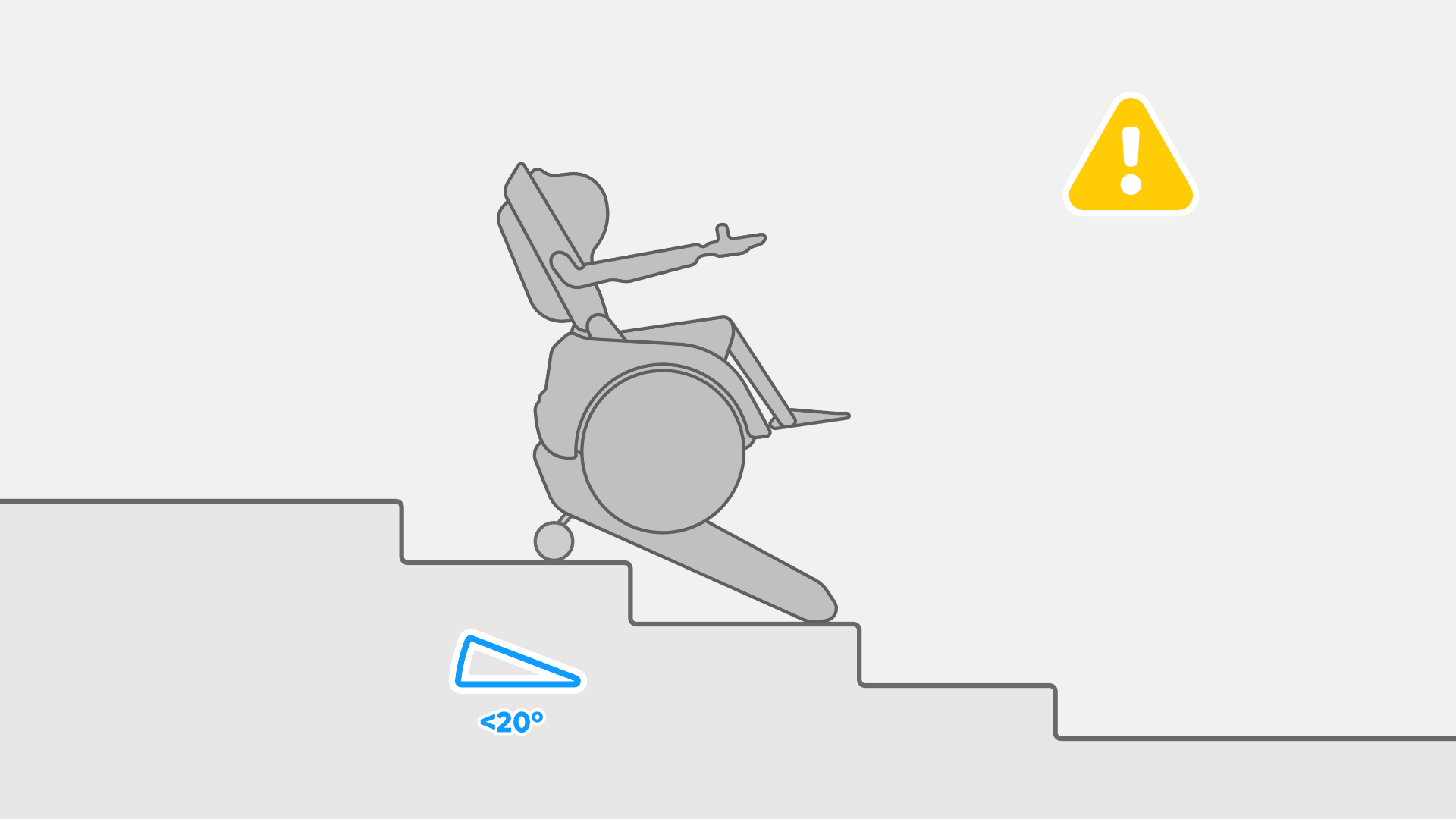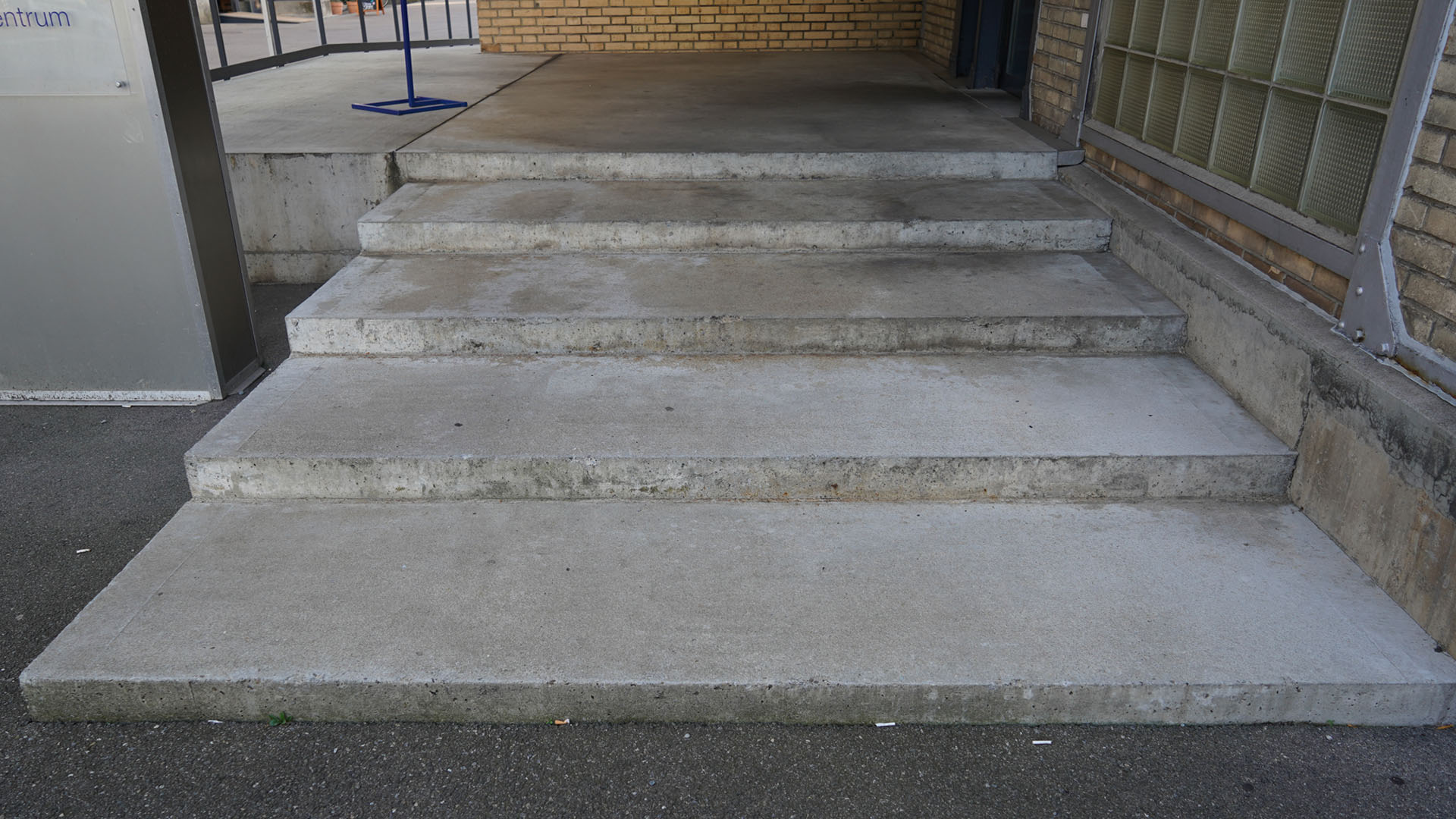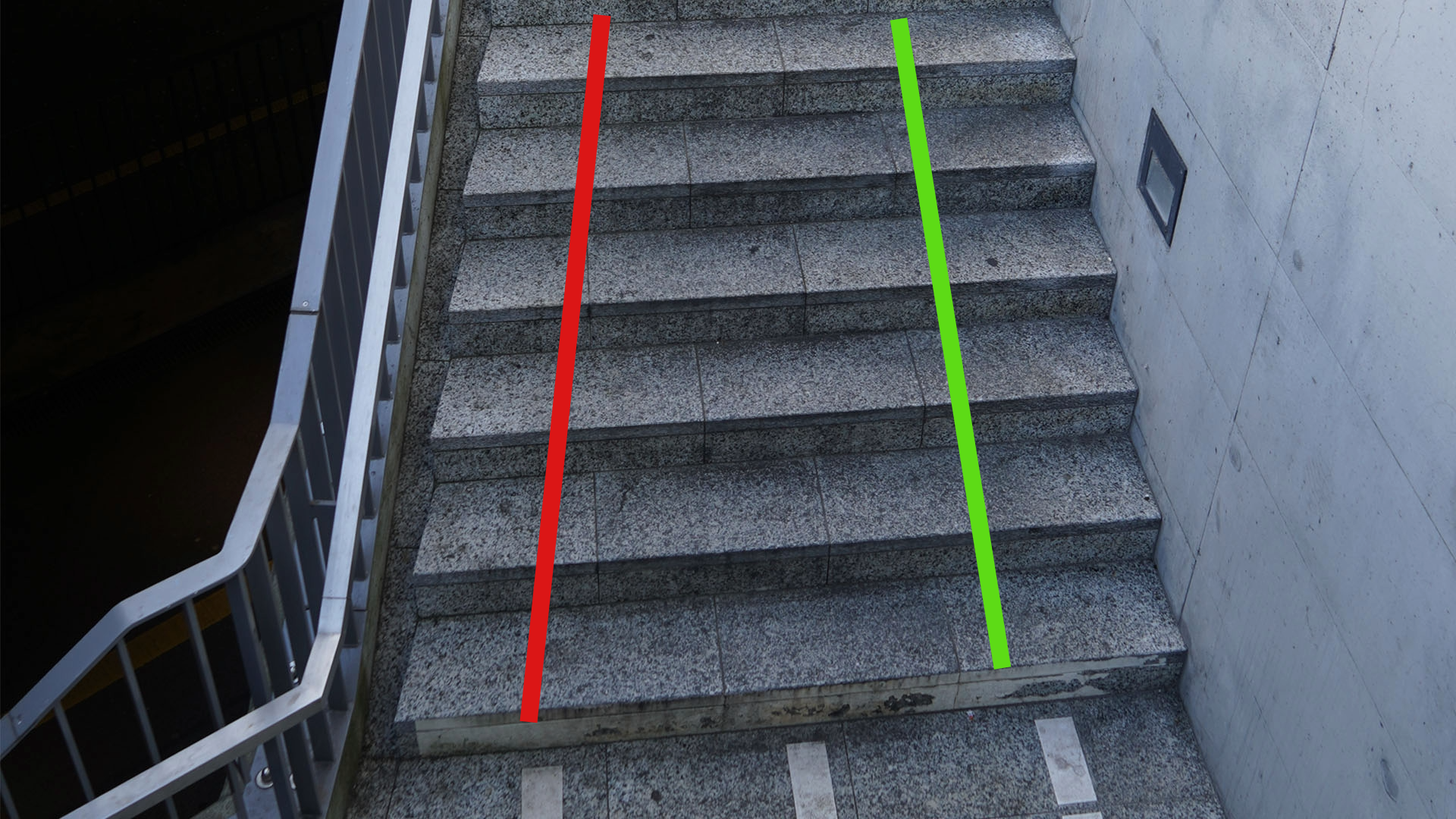Stairs which must be climbed with caution
Premature detection of the end of stairs | |||
|
| ||
If the upper end of the stairs, where the steps are shaped with a nosing edge, is detected too early, the support system might get stuck. In this case, climb down a bit and try again. If the support system extends too early again, you will have to climb down the stairs completely and unfortunately its not possible to overcome this obstacle (see Premature Detection of the End of Stairs). | |||
Descending stairs with a low last step | |||
|
| ||
BRO might detect the end of the stairs one step too early and already extends the support system. If you continue driving now, the support system will slide down the step and you will feel a shock. To avoid this, switch toTrack mode to descend the last step. | |||
Be careful when descending stairs that have a low bottom step
Some stairs have a low bottom step. When descending such stairs, sometimes the end of the stairs might not be detected correctly and the support system extends already on the bottom step. Never descend the bottom step with the support system extended! The support system could break due to the abrupt impact and you could topple backwards onto the stairs and injure yourself. Use the track mode or drive mode to move away from the bottom step.
Climbing up stairs with a low first step | |||
|
| ||
It’s possible that in stair mode, the tracks do not find grip and spin freely because the first step is too low. Switch to Track mode to climb the first step. BRO automatically recognizes the following steps and switches to stair mode. | |||
Flat stairs | |||
|
| ||
BRO is able to climb stairs with an inclination of at least 20°. It is important that BRO's tracks ideally rest on at least two steps simultaneously while climbing stairs. When descending flat stairs it may happen that BRO doesn’t retract the support system in time and you fall down the step onto the support system. When ascending flat stairs, a tipping moment backwards can occur and the ATS is triggered. If the step depth is long enough, flat stairs can also be overcome as single steps . | |||
|
| ||
Be careful when using carpeted stairs. It is essential to check whether the carpet is strongly attached to the stairs to withstand the load. There is a risk that the carpet may become loose causing BRO to slip. Additionally, for carpeted stairs, it's important to monitor the end of stairs carefully to ensure that BRO reliably detects the end despite the surface. | |||
Be careful on carpeted stairs
Some stairs are partially covered with carpet. The carpet is glued or mechanically attached to the supporting surface. Before climbing carpeted stairs, always check that the connection between the carpet and the stairs is strong enough to withstand the increased loads of the stair climber. Otherwise the carpet may detach from the supporting surface causing you to slide down the stairs uncontrollably along with the carpet. This can be potentially life-threatening. You should check this carefully, especially in the case of temporary installations (e.g. at a fair or concert).
Always drive straight on stairs and maintain a 90° angle to the steps | ||
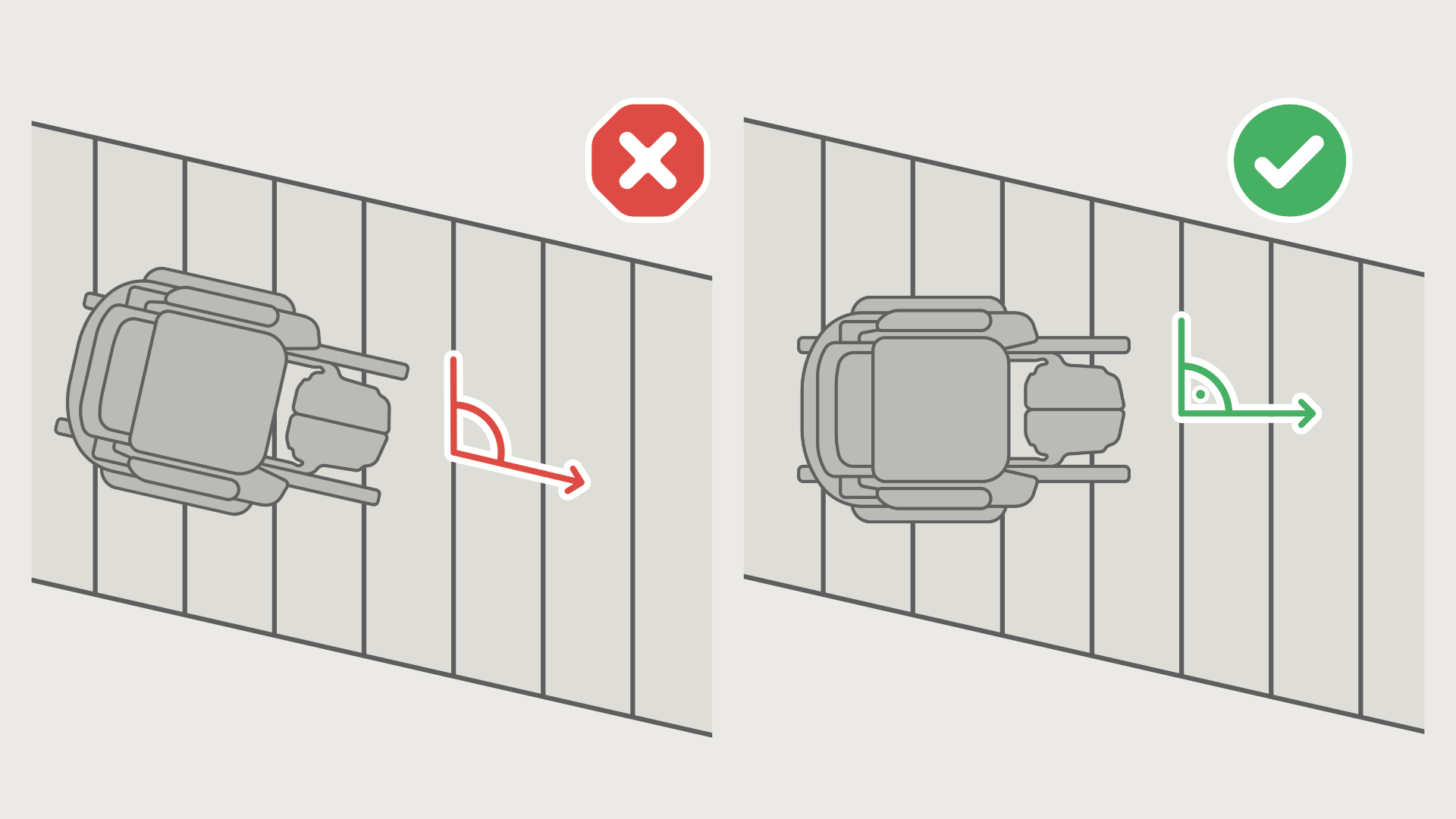 |
| |
It is important to always be positioned at a 90° angle to the steps. This doesn’t necessarily mean that you always drive parallel to the course of the stairs. | ||
Getting stuck on stairs
If you get stuck on a flight of stairs – i.e. if the wheelchair suddenly runs out of battery or another problem occurs and the wheelchair can no longer be operated – then proceed as described in Manual Emergency Operation (Push Mode). If in doubt, call for help.
